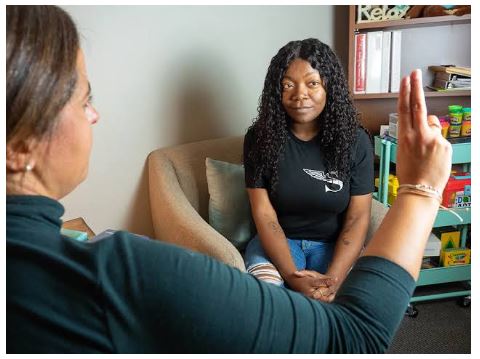The Hidden Wounds You Carry Deserve More Than Just Coping
Some scars are invisible. You can’t spot them on an x-ray or in some doctor’s report. They’re lodged deep in your nervous system, like, that heart-thumping panic when someone raises their voice, or that weird pit in your stomach when things get too close, too fast. Joy can feel just as risky as pain sometimes, which is wild, right?
If you know trauma, then you know that surviving it took everything. Every ounce of guts you had. But actually learning to live again, to feel safe in your own skin, trust your feelings, let yourself actually love people? That’s a whole another beast.
So here’s the thing I’ve learned after years of sitting with folks on their healing rollercoaster:
It can happen. Really. You don’t have to drag yourself through every awful memory or force yourself into situations that make your body scream “nope.” Healing can be slow. It can be soft. It can respect the part of you that toughed it out this long.
A couple of therapies that have actually worked for people:
IFS (Internal Family Systems) and EMDR (Eye Movement Desensitization and Reprocessing). Both approaches are evidence-based and well-supported by research in the field. They’re not about “curing” you, because, let’s be real, you were never broken in the first place. It’s more about helping your mind and body find a spot where you actually feel safe again.
Signs You Might Be Carrying Unhealed Trauma
Alright, so maybe you’re wondering if you’re lugging around old trauma. Here’s a quick reality check:
- You’re anxious for “no reason”
- You feel numb or zoned-out even during big moments
- Anger or panic hits outta nowhere
- Shame or self-blame that won’t quit
- Trust issues, even with people you love
- Dodging certain memories, places, or people
- Stuck in the same pain-loop, no matter how hard you try
Guess what? None of that makes you “too sensitive” or “damaged.” These are just survival hacks your body picked up to get you through the tough times. The people-pleasing, the shutting down, the always-on-alert, those were your armor. Maybe now that armor’s just getting in the way. Maybe it’s time to loosen it. They’re not defects; they’re the parts of you that carried the load so you could make it here.
That’s where IFS and EMDR come in. They’re not about forcing you to relive the worst days of your life. They’re more like, “Hey, let’s thank those protective parts of you, then show them it’s finally safe to chill.” IFS is all about treating your inner defenders with some actual kindness. EMDR lets your body finally let go of what it’s been holding, without making you retell your story on repeat. It works with your system, not against it.
Healing’s not erasing the past. It’s about giving yourself a shot at safety, letting joy feel possible again, trusting your gut. It’s letting your whole self know: surviving was necessary, but now it’s time for something better. You don’t have to stay in survival mode forever. You really, truly deserve more.
“You Have to Relive Trauma to Heal It”
About the whole “You have to relive trauma to heal” thing? Ugh, how many times have you heard that? The idea that healing means ripping yourself open again and again until you’re numb, nah. Not true. You don’t need to torture yourself to “get better.” Healing is about learning to carry the pain differently, not making it heavier. You get to go at your pace. You get to say, “I’m done for today.” Don’t think that’s weakness; it’s pure wisdom.
Make space for those hurting parts. Don’t bully yourself for having them. They were your way of staying alive. So yeah, you don’t have to relive the worst to heal. You just have to start showing up for yourself, one tiny, brave step at a time. Whole new life on the other side, promise.
Alright, let’s get real for a second. IFS therapy isn’t your typical “let’s fix you” routine. Nope. Think less repair shop, more… meeting your inner crew for the first time. Some of these parts? They’ve been running the show behind the scenes forever, and honestly, they’re exhausted.
So, picture this: you’re sitting there, maybe a little nervous, maybe rolling your eyes at the whole “inner parts” thing. But then, you start noticing these pieces of you, like the hyper-vigilant one that never chills, or the guilt-ridden part that thinks it’s destined for exile, or that feisty, angry voice that pops off at the worst times. Spoiler: none of these parts are villains. They’re more like misunderstood bodyguards who got the wrong memo ages ago.
Every single one has a backstory. Maybe that anxious part kept you out of trouble as a kid. Maybe the angry one shielded you from pain. They’re not trying to ruin your life, they’re just… stuck in old roles.
Here’s where IFS flips the script. Instead of bulldozing those parts or telling them to “just get over it,” you get curious. Like, “Hey, what’s your deal? What are you so worried about? What do you need from me, right now?” It’s kind of wild, when you stop fighting these parts and actually listen, the whole vibe changes.
Little by little, they ease up. That edge softens. It’s not some movie-moment breakthrough, more like a slow exhale after holding your breath for years. Sometimes you cry. Sometimes you just feel… lighter. Sometimes it’s just the tiniest shift, but man, it counts.
And your therapist? They’re not there to play Mr. Fix-It. Think of them more like a trail guide, shining a flashlight while you poke around your own emotional attic.
Bottom line: IFS isn’t about talking circles around your pain. It’s about building trust with the weird, wild, wounded parts of yourself, and realizing, maybe for the first time, that you don’t have to keep fighting what’s inside. You can actually work together. Wild, huh?
What Happens in an IFS Therapy Session?
Meeting Your Parts
IFS therapy isn’t your typical “let’s fix you” routine. Nope. Think less repair shop, more… meeting your inner crew for the first time. Some of these parts? They’ve been running the show behind the scenes forever, and honestly, they’re exhausted.
So, picture this: you’re sitting there, maybe a little nervous, maybe rolling your eyes at the whole “inner parts” thing. But then, you start noticing these pieces of you, like the hyper-vigilant one that never chills, or the guilt-ridden part that thinks it’s destined for exile, or that feisty, angry voice that pops off at the worst times. Spoiler: none of these parts are villains. They’re more like misunderstood bodyguards who got the wrong memo ages ago.
Every single one has a backstory. Maybe that anxious part kept you out of trouble as a kid. Maybe the angry one shielded you from pain. They’re not trying to ruin your life, they’re just… stuck in old roles.
Here’s where IFS flips the script. Instead of bulldozing those parts or telling them to “just get over it,” you get curious. Like, “Hey, what’s your deal? What are you so worried about? What do you need from me, right now?” It’s kind of wild, when you stop fighting these parts and actually listen, the whole vibe changes.
Little by little, they ease up. That edge softens. It’s not some movie-moment breakthrough, more like a slow exhale after holding your breath for years. Sometimes you cry. Sometimes you just feel… lighter. Sometimes it’s just the tiniest shift, but man, it counts.
And your therapist? They’re not there to play Mr. Fix-It. Think of them more like a trail guide, shining a flashlight while you poke around your own emotional attic.
Bottom line: IFS isn’t about talking circles around your pain. It’s about building trust with the weird, wild, wounded parts of yourself, and realizing, maybe for the first time, that you don’t have to keep fighting what’s inside. You can actually work together. Wild, huh?
Unburdening Pain
When a wounded part begins to trust your Self (your calm, compassionate core), it can finally release the emotions it has carried for years.
Tears, relief, tenderness, these moments often come, but always at your system’s natural pace, never forced.
What Happens in an EMDR Therapy Session?
Alright, let’s talk about what actually goes down in an EMDR therapy session.
Spoiler: it’s not some dramatic movie moment where you bravely face all your demons in one go. No, it’s way more chill (and, honestly, a lot safer for your brain).
Resourcing and Preparation
First off, you don’t just waltz in and start digging up your worst memories. That’s a recipe for disaster. Your therapist is gonna help you stack up some “resources”, little pockets of calm you can lean into when things get rocky. Could be picturing a ball of light in your chest, or just thinking about your grandma’s hands (man, the power of grandma energy). Even just tuning into your own breath can work. These are your emotional life vests for when the session starts to get heavy
Targeting a Memory
Once you’ve got your safety net, you and your therapist pick a memory to work with. Not the big, scary one that feels like it’ll break you in half. Something you can actually handle, even if it stings a little. You take a look at it, see what pops up: images, feelings, those old beliefs that keep whispering you’re powerless or unworthy. Not just thoughts, these things have been living rent-free in your nervous system for years.
Reprocessing with Bilateral Stimulation
Alright, here’s where the science-y part kicks in. Your therapist’ll guide you through some gentle eye movements, or maybe tapping, or sounds that bounce back and forth. What’s the point? It helps your brain finally process the junk it got stuck on, those frozen memories and feelings you never let yourself feel. And you know what? Something cracks open. The memory doesn’t disappear, but it stops being this monster under your bed. You loosen up. Your brain goes, “Wait a second, that was then, this is now. I actually made it.”
Suddenly, new realizationsa creep in. Sometimes it’s a whisper, sometimes a tidal wave:
“I didn’t deserve that.”
“That wasn’t my fault.”
“Maybe I’m not broken after all.”
Closing and Grounding
Before you leave, your therapist makes sure you’re back in the here and now. Big breaths, feel your feet on the ground, that kind of thing. You remember: you’re safe. You’re whole. No one’s leaving you trapped in the past.
Riya’s Story
Riya walked into therapy convinced she was just… messed up beyond repair. Couldn’t figure out why raised voices sent her into panic mode or why she always froze in arguments. Through IFS, she found this little kid inside her, seven years old, hiding in a closet while her parents screamed at each other. And with EMDR, she finally let herself feel all that old fear and confusion. Didn’t erase the memory, but she took her power back. Now? Raised voices don’t freak her out like they used to. She’s steady, grounded, finally standing tall in her own skin.
Therapy Is an Act of Courage, Not Weakness
Look, you don’t have to play superhero and muscle through your pain alone. Therapy isn’t about wallowing in the past or racing to “fix” yourself. It’s about moving at the pace you can actually handle, with someone right there beside you who isn’t judging your mess.
Here at Coach For Mind, nobody’s gonna shove you into the deep end. We’re walking with you. Patiently. With zero judgment. We honestly believe there’s no part of you too broken or too far gone. Healing’s on the table for everyone, and you don’t have to go at it alone.
You’re not hopeless.
You’re not broken.
And yeah, healing is possible.
FAQ: IFS, EMDR, and Deep Trauma Healing
Can IFS and EMDR really heal deep trauma?
In a nutshell: Definitely.
And it’s supported by decades of research and real-world experiences, so it’s not just wishful thinking. People with complex trauma, PTSD, anxiety, depression, and even chronic pain can benefit greatly from IFS (Internal Family Systems) and EMDR (Eye Movement Desensitization and Reprocessing), according to studies (van der Kolk, 2014; Shapiro, 2018).
When conventional talk therapy seems to be only touching the surface, these methods are particularly beneficial. IFS assists you in developing a caring relationship with the various “parts” of yourself, those wounded, protective, and occasionally destructive parts that have adapted to survive. EMDR facilitates the processing and release of trapped trauma in your brain, enabling you to proceed more easily.
Will I have to relive everything in detail?
No, you don’t.
Being trauma-informed, IFS and EMDR put your emotional safety first.
You won’t be asked to recount your entire trauma story in vivid detail or relive every single moment. The emphasis is on how those experiences and memories still affect you today, manifesting in your body, emotions, and beliefs, and how we can assist you in changing that without causing you to relive the trauma.
We always respect your nervous system, your pace, and your boundaries.
How do I choose between IFS and EMDR?
Excellent question, but there isn’t a universally applicable solution.
Here’s a straightforward way to think about it:
- IFS is frequently a good place to start when developing self-awareness and inner trust. It enables you to comprehend the various aspects of yourself and the reasons behind your actions
- When you feel prepared to work directly with particular memories or beliefs that still have a charge, EMDR is frequently beneficial.
Many therapists combine the two methods, employing EMDR when the time seems appropriate for more in-depth processing and IFS to create a sense of safety and connection.
In actuality, you don’t have to make this decision by yourself. Based on what feels most helpful for your system at the moment, your therapist will provide you with guidance.
Is it normal to feel scared to start trauma therapy?
Totally Normal. It would be surprising if you weren’t a little nervous.
Your nervous system uses fear to tell you, “Hey, we’ve been through a lot, let’s be careful.” Instead of dismissing that fear, we should show compassion.
Effective trauma treatment does not encourage you to “just get over it” or “be strong.” It meets you in your current location. It moves at a pace you can sustain and respects your body’s cues.
You can take your time. Asking questions is acceptable. Feeling unsure is acceptable. All of that is a part of the procedure.
How can therapy at CFM support trauma healing?
At Coach For Mind, therapists are trained in trauma-sensitive IFS and EMDR.
Our therapists have years of experience helping clients navigate the most delicate and intricate stories, and they have received extensive training in trauma-sensitive IFS and EMDR. More than that, though, we think you should be treated as a complete person rather than as a problem that needs to be solved.
There is no “too much” here. No embarrassment. You’re not supposed to be on a timeline. Just room to move at your own speed, breathe, explore, and recover.
This has nothing to do with “fixing” you. It’s about respecting your system’s wisdom, even the parts that seem disorganized or flawed. Our purpose is to walk with you, not in front of you.
How long does healing take with IFS and EMDR?
We all want to know the answer to that question, but it’s also the most difficult to answer.
Every trip is unique. It’s acceptable for some people to notice changes more slowly than others. There is no stopwatch that counts down to “done,” and healing is not a straight line.
We can assure you that:
- Your therapist will adjust to your pace, not the other way around;
- You will receive patient, respectful, and clinically skilled support.
- Despite your doubts, we have faith in your capacity to recover.
Additionally, every action you take, no matter how minor, counts as progress. The shaky steps also count.
You are not your wounds.
You are the life that survived them, and you are worthy of healing, exactly as you are.
When you’re ready to take your first gentle step toward healing, we are here to walk with you.
Visit www.coachformind.com.














